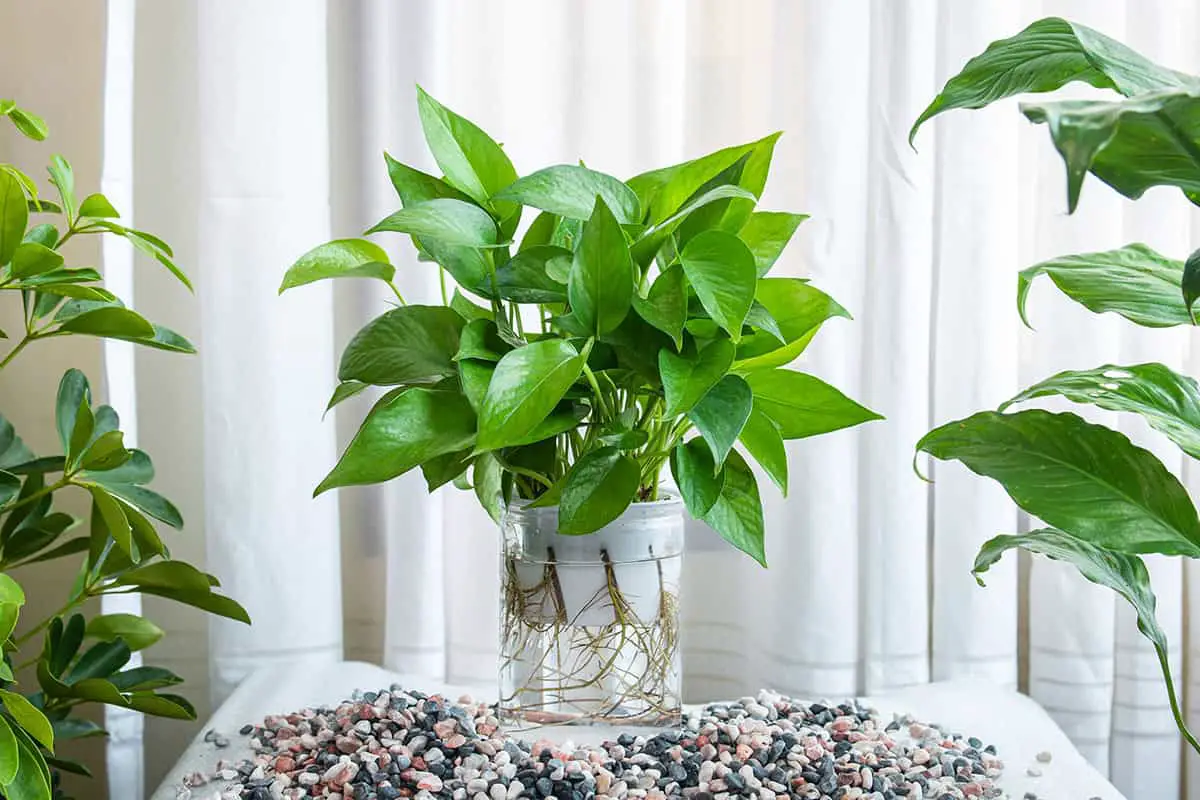You’ve recently added a pothos plant to your home, and you’re attracted by its lush, trailing vines and reputation for being low-maintenance. But now you’re wondering how to keep it thriving. With just a few simple care tips, you can ensure your pothos remain vibrant and healthy. In this article, you’ll learn all the information for basic pothos care, making it easy to enjoy a beautiful, flourishing plant.
Table of Contents
Light
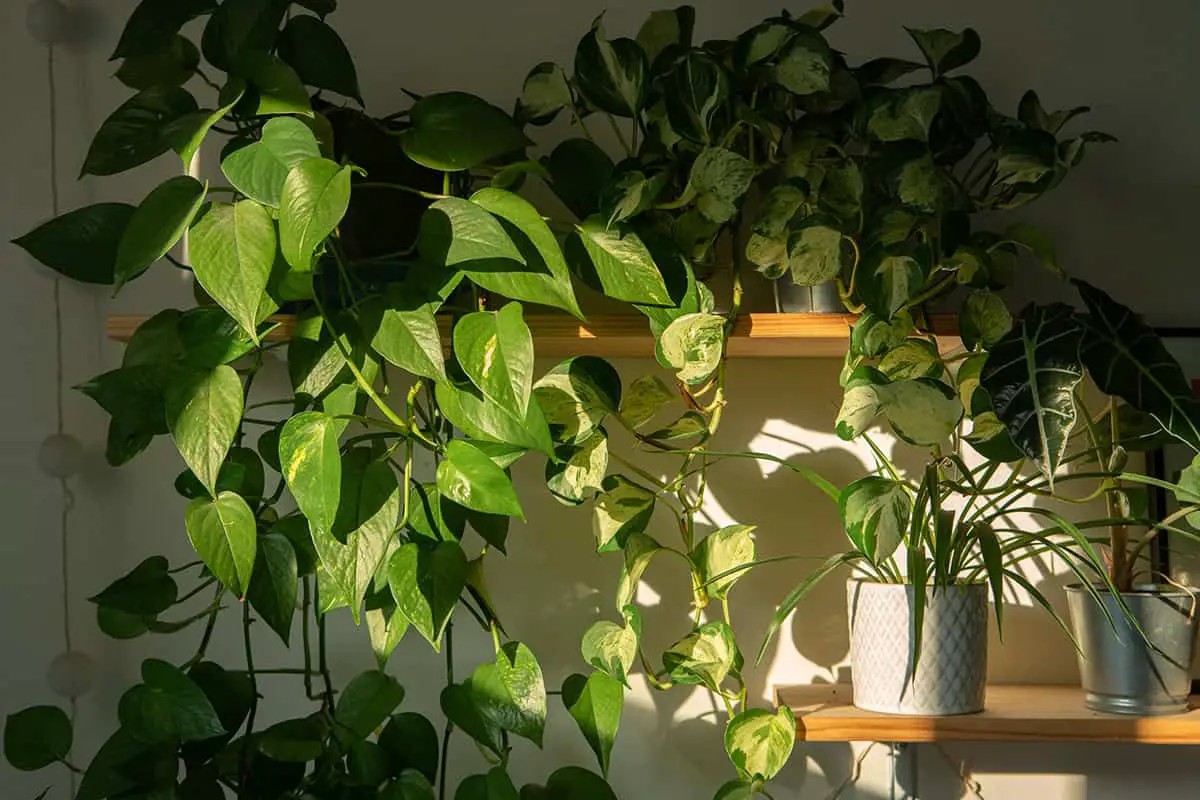
Pothos thrives in various lighting conditions, which makes it ideal for indoor spaces. Your plant prefers bright, indirect light to maintain its vibrant leaves. A spot near a window with a sheer curtain would provide the perfect amount of light.
Direct sunlight, however, can harm the Pothos leaves. Too much direct light can scorch them, leading to browning and withered foliage. It’s important to find a balance to keep your plant healthy.
If you have low-light areas, Pothos can adapt to those too. Growth may slow, and leaves may be less variegated, but the plant will survive. Ensuring that your Pothos receives adequate light will contribute to a fuller and more attractive appearance.
Remember that light affects watering. In brighter light, your Pothos may need more frequent watering as it dries out faster.
Soil
Pothos plants thrive in well-drained potting soil. You need a mixture that retains moisture but also allows excess water to drain, preventing root rot. A standard houseplant potting mix works well. Pothos tolerates a variety of soil types but prefers a pH range from 6.1 to 6.5, which is slightly acidic.
To improve drainage and aeration, consider adding perlite or coarse sand to the mix. These amendments help prevent the soil from becoming too compact. If the soil is too dense, water will not flow freely and could lead to problems like black spots on the leaves, indicating overwatering.
Ensure your pothos pot has drainage holes. This allows the water to escape and not stagnate at the bottom. After watering your plant, excess water should be able to drain out quickly. Always let the soil of your pothos dry out between waterings to maintain the right balance of moisture.
Water
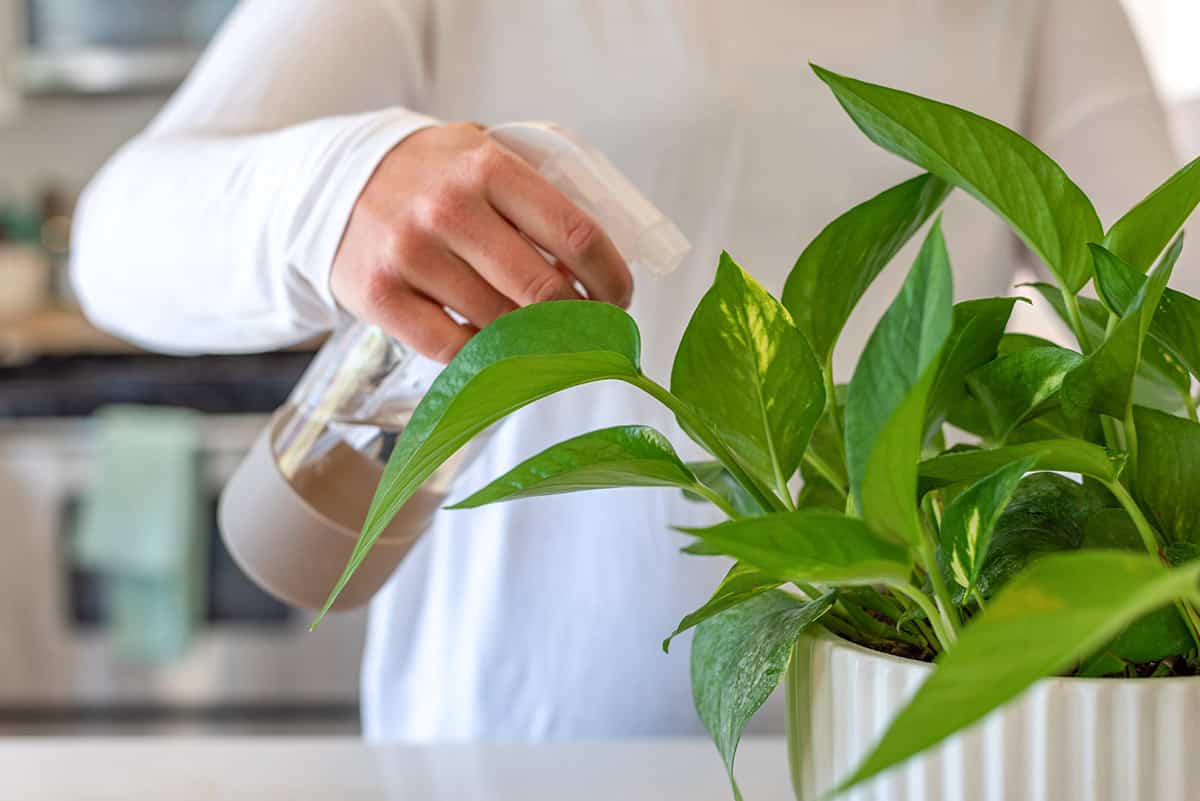
Pothos plants require a balance in their watering routine. They thrive when the soil dries out slightly between waterings. You should ensure the soil is moist but not soaked. Overwatering can lead to root rot—a common issue with houseplants.
When you water, do so thoroughly until the excess drains from the pot. Then, wait until the top inch of the soil feels dry before watering again. Your pothos will appreciate this cycle, as it mimics their natural tropical environment.
Keep in mind, the frequency of watering will vary with the seasons. In warmer months, pothos typically need more water. Conversely, in cooler months, they require less. Always check the soil before deciding to water to avoid over-hydration.
If the leaves begin to droop or turn yellow, consider this a signal. It may indicate that it’s time to adjust your watering schedule.
Temperature and Humidity
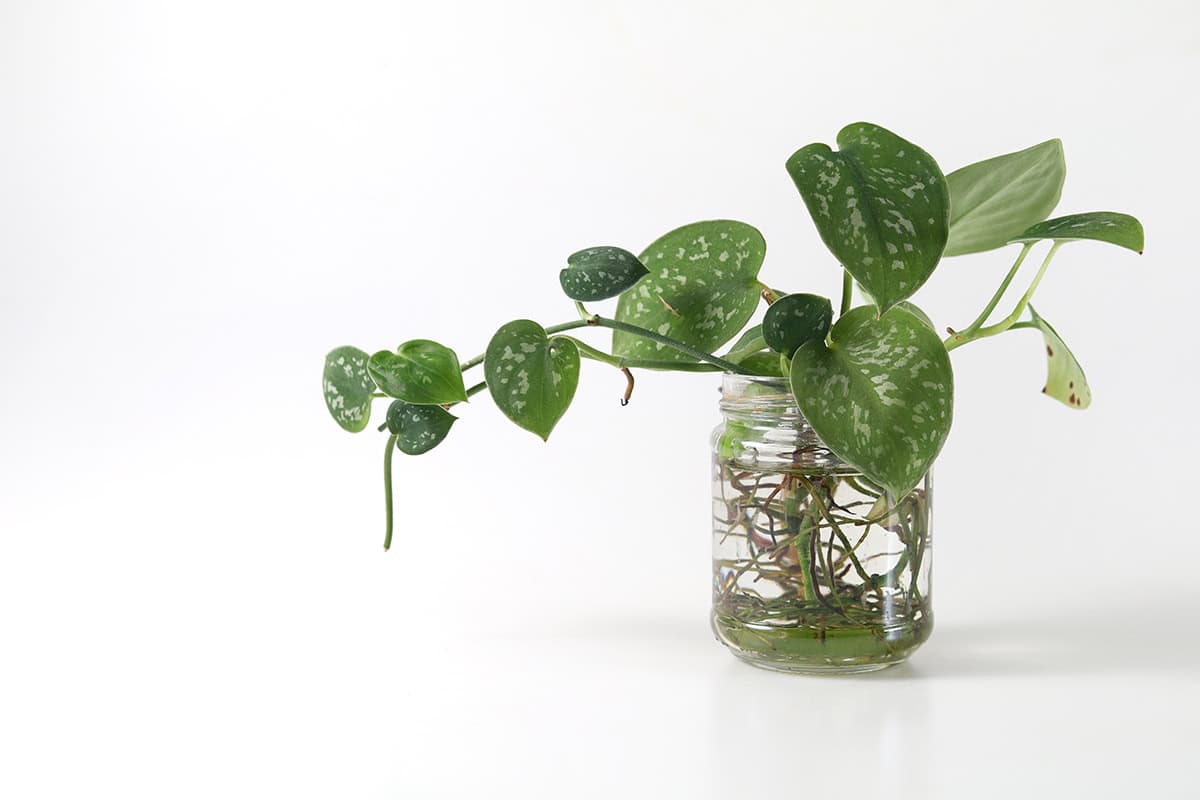
Pothos plants thrive in warm environments. Your Pothos prefers temperatures between 65 to 75 degrees Fahrenheit. Although adaptable, temperatures should not drop below 50 degrees Fahrenheit, as cold conditions can harm the plant. It’s crucial to maintain a consistent temperature range to ensure healthy growth.
Humidity is another factor for your Pothos. These plants enjoy a higher humidity level. Often, the bathroom and kitchen in your home provide an ideal setting due to their typically higher moisture content in the air. If you live in a dry climate, consider placing a humidifier near your plant to boost the humidity.
To summarize, ensure your Pothos experiences moderate warmth without significant temperature fluctuations and high humidity. These conditions mimic the Pothos’s natural habitat and contribute to its resiliency as a popular houseplant.
Fertilizer
Your Pothos plant requires fertilizer to sustain healthy growth. During the growing season, which is spring and summer, you should fertilize your Pothos every 4-6 weeks. A balanced, water-soluble fertilizer is suitable. Aim for a fertilizer with an NPK ratio of 10-10-10, which is beneficial for foliage plants.
In the fall and winter months, your Pothos enters a rest period. You should pause feeding during these times. Over-fertilizing can harm the plant, leading to wilted leaves or root burns. Signs of over-fertilization include browning leaf tips and loss of the vibrant green color.
If you are unsure about the strength of the fertilizer, err on the side of caution. Use half the recommended dose to prevent potential damage to your plant. This will provide your Pothos with necessary nutrients without the risk of overfeeding.
Stick to the correct quantities, and your Pothos should thrive, sporting lustrous leaves and robust growth. Always read the instructions on your fertilizer to ensure proper use and plant health.
Propagation
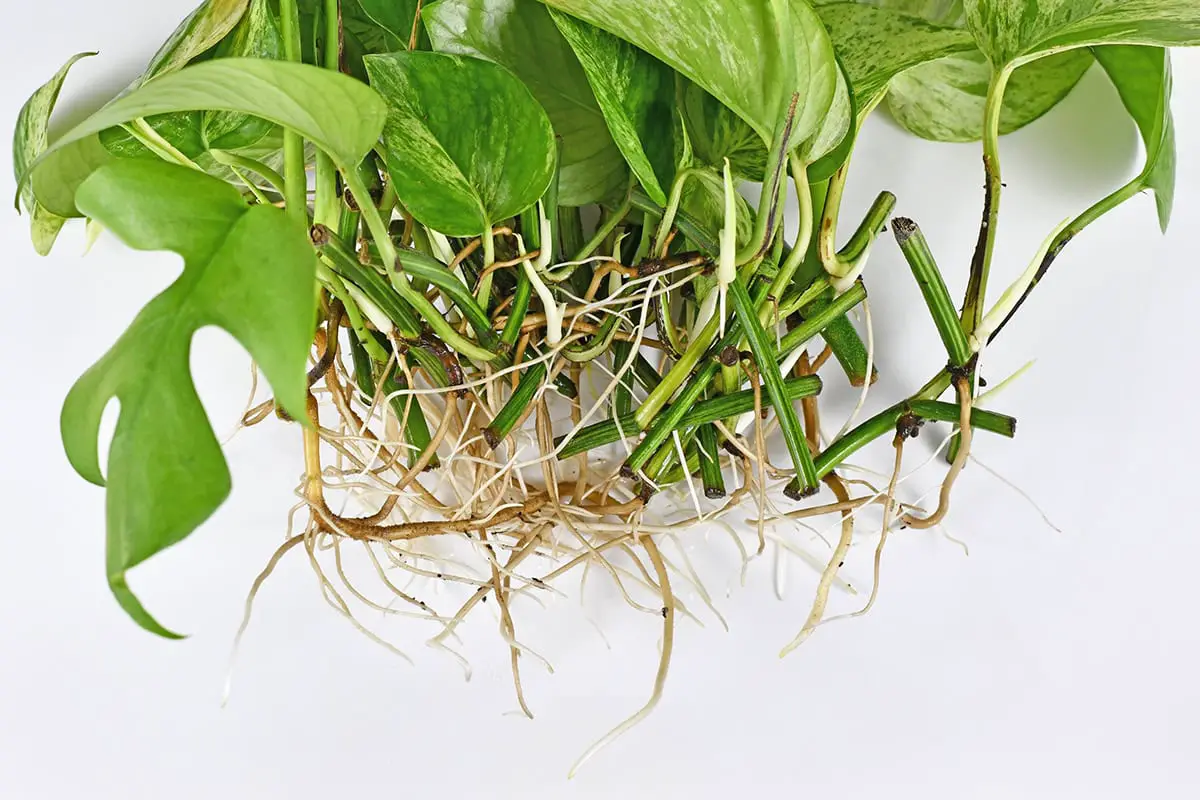
Propagating your pothos can be a rewarding experience. You can create new plants from a healthy mother plant with ease. Begin by selecting a section of the stem that includes at least one node. Nodes are small, brown bumps on the stems from which leaves grow.
Step 1: Cut the stem just below a node. Use a sharp, clean pair of scissors to avoid damaging the plant. The cut should be clean and straight. This increases the chance of successful rooting.
Step 2: Place your cutting in a container of water. Make sure the node is submerged. Roots will begin to grow from this point. Change the water every few days to keep it fresh and encourage root growth.
Step 3: Once the roots are several inches long, transplant the cutting to potting soil. A well-draining mix is ideal for pothos. Keep the soil moist as your new pothos adjusts to its environment.
After these steps, you should see new growth within a few weeks.
Pruning
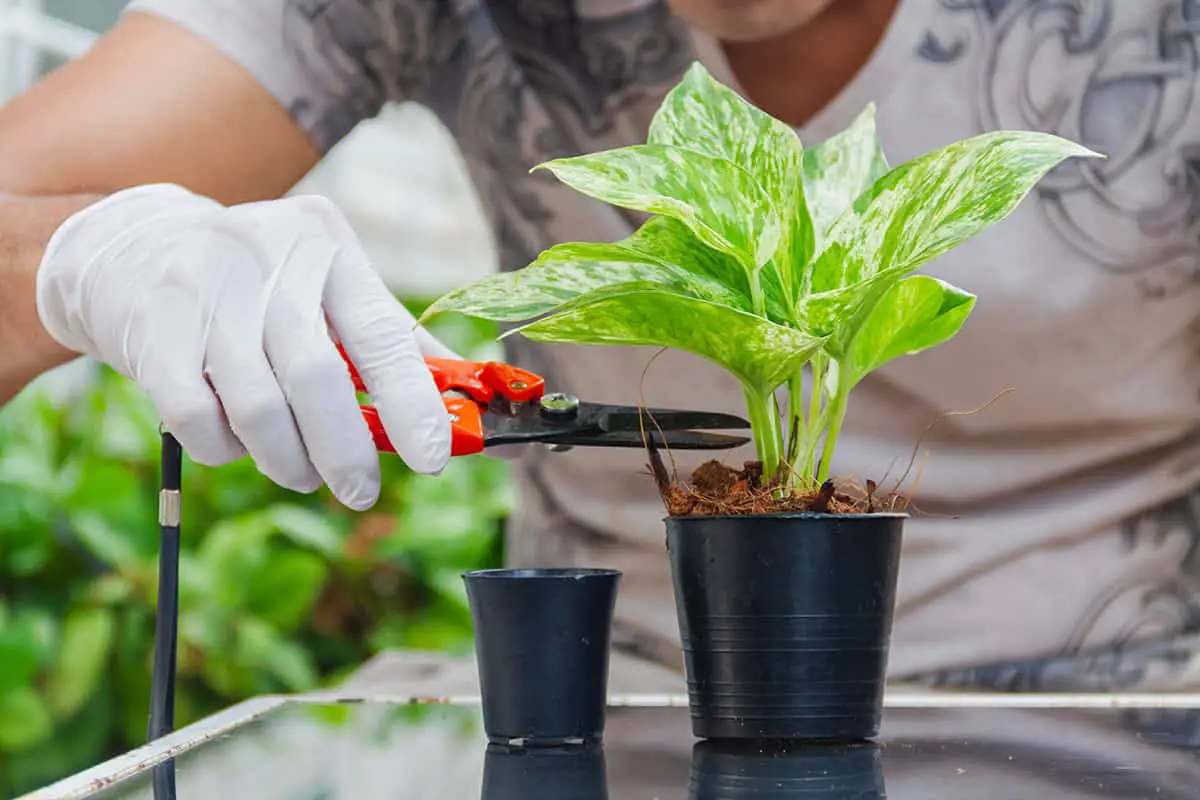
Pruning your Pothos maintains its size and encourages new growth. Begin by removing dead or yellowing leaves with sharp scissors. This keeps your plant healthy.
Cut stems just above a leaf node. This is where new leaves will grow. Pruning here helps your Pothos become fuller.
Regularly assess your Pothos for pruning needs. Trim overgrown or leggy stems to maintain the desired shape. This directs the plant’s energy to healthier areas, promoting more robust growth.
If your Pothos grows too long, don’t hesitate to cut it back. Shorter stems can also propagate new plants. Your Pothos will recover quickly and keep thriving.
Potting and Repotting
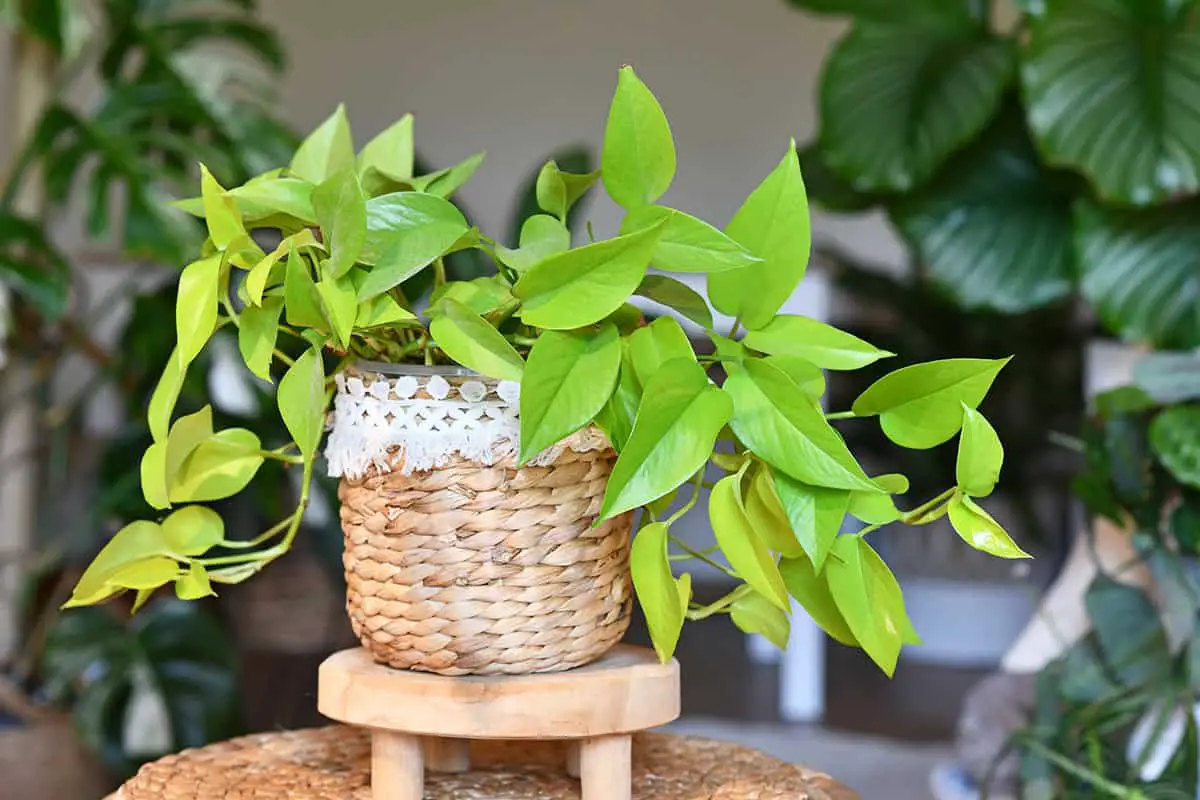
When you repot Pothos, you give it fresh soil and more space for roots to grow. It’s best to repot your Pothos every one to two years. Choose a new pot that is slightly larger than the old one. This ensures enough room without overwhelming the plant.
Start with a potting mix suited for Pothos. It should drain well to prevent root rot. Fill the new pot with a layer of this soil before you transfer the plant. Gently remove Pothos from its current pot, being careful with the roots.
Place Pothos in the center of the new pot and fill around it with more potting mix. Water it thoroughly after repotting to help settle the soil. This encourages roots to grow in their new environment. For optimal growth, place Pothos where it can receive bright, indirect light.
Maintain the right balance in watering. Let the soil dry between waterings to avoid overwatering. Signs of excess water include black spots on the leaves. Your Pothos will thrive with correct potting and timely repotting.
Common Problems & Troubleshooting
Pothos plants are generally easy to care for but can encounter issues.
Yellow leaves often indicate overwatering. Ensure your plant has well-draining soil and reduce your watering schedule.
Conversely, brown leaf tips suggest low humidity or under-watering. To resolve this, mist your pothos or water it more frequently.
If your pothos has stunted growth, it may need more light or fertilizer. Place it in bright, indirect sunlight and feed it with a balanced fertilizer every other month.
For pest infestations like mites or mealybugs, clean the leaves with soapy water and isolate the plant to prevent spread.
To tackle diseases, such as root rot, remove the affected parts and repot in fresh soil. Always sterilize your tools to avoid spreading pathogens.
For leaf spots and blights, remove the damaged foliage and improve air circulation around your pothos.
Symptoms such as yellow halos on leaves can indicate further problems. Prompt action helps resolve these issues quickly, keeping your pothos healthy.
Pothos Varieties
Pothos plants are versatile, with several varieties that offer a range of colors and patterns. Learn about them to select your favorite.
Golden Pothos
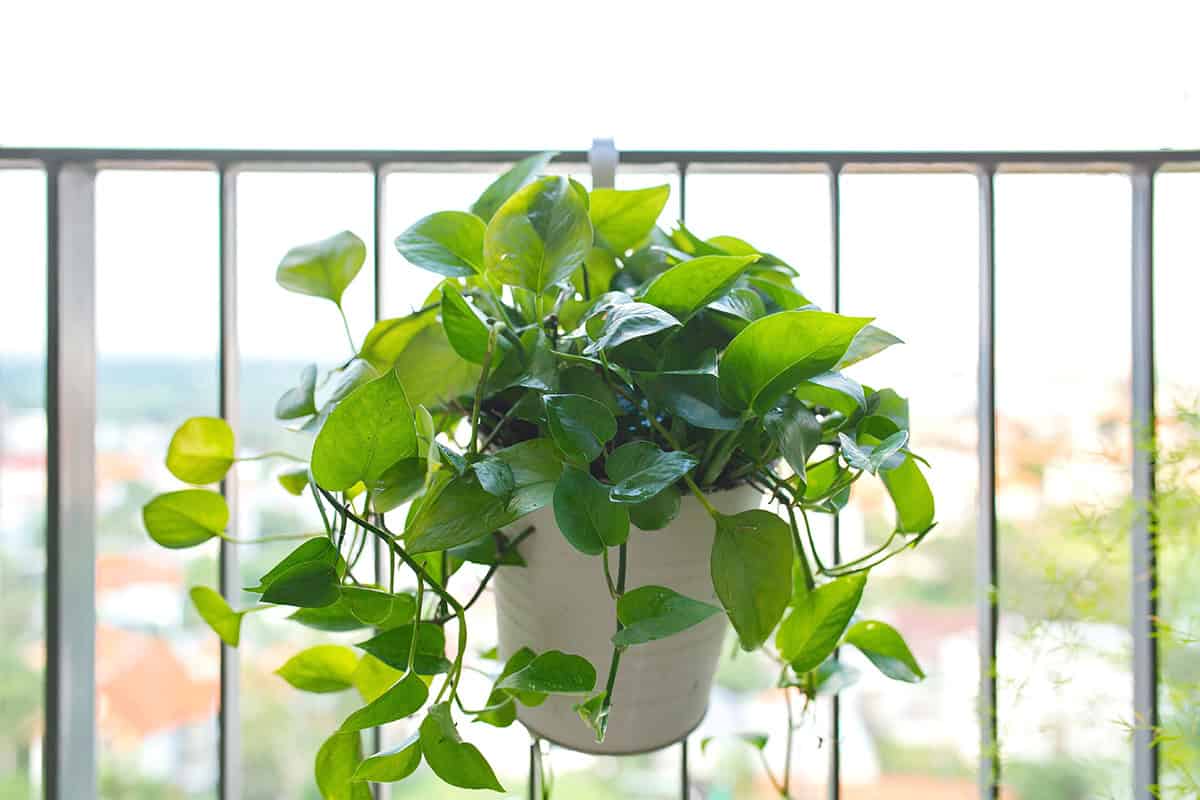
Your Golden Pothos, or Epipremnum aureum, displays heart-shaped, glossy leaves with splashes of yellow. Commonly found, it’s a robust type perfect for beginners.
Marble Queen Pothos
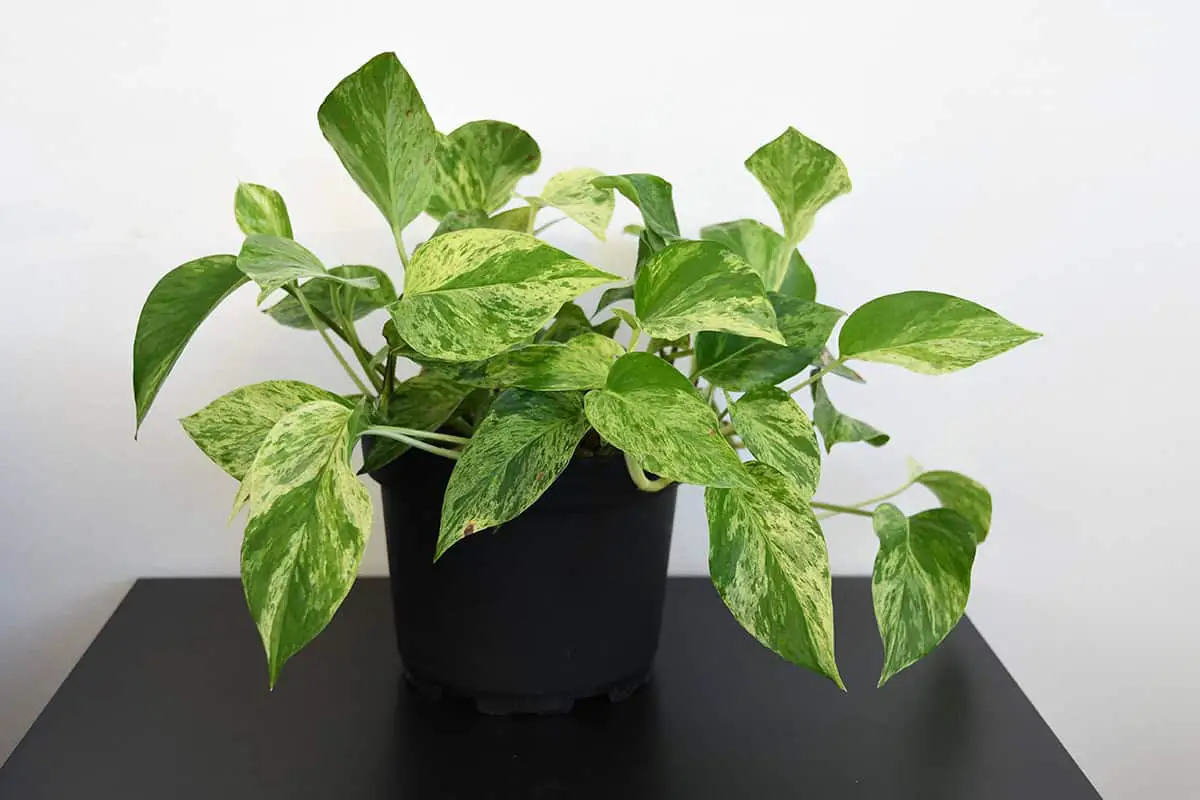
The Marble Queen Pothos features a leathery texture with a striking mix of green and white on its leaves. It’s slower growing compared to the Golden variety.
Neon Pothos
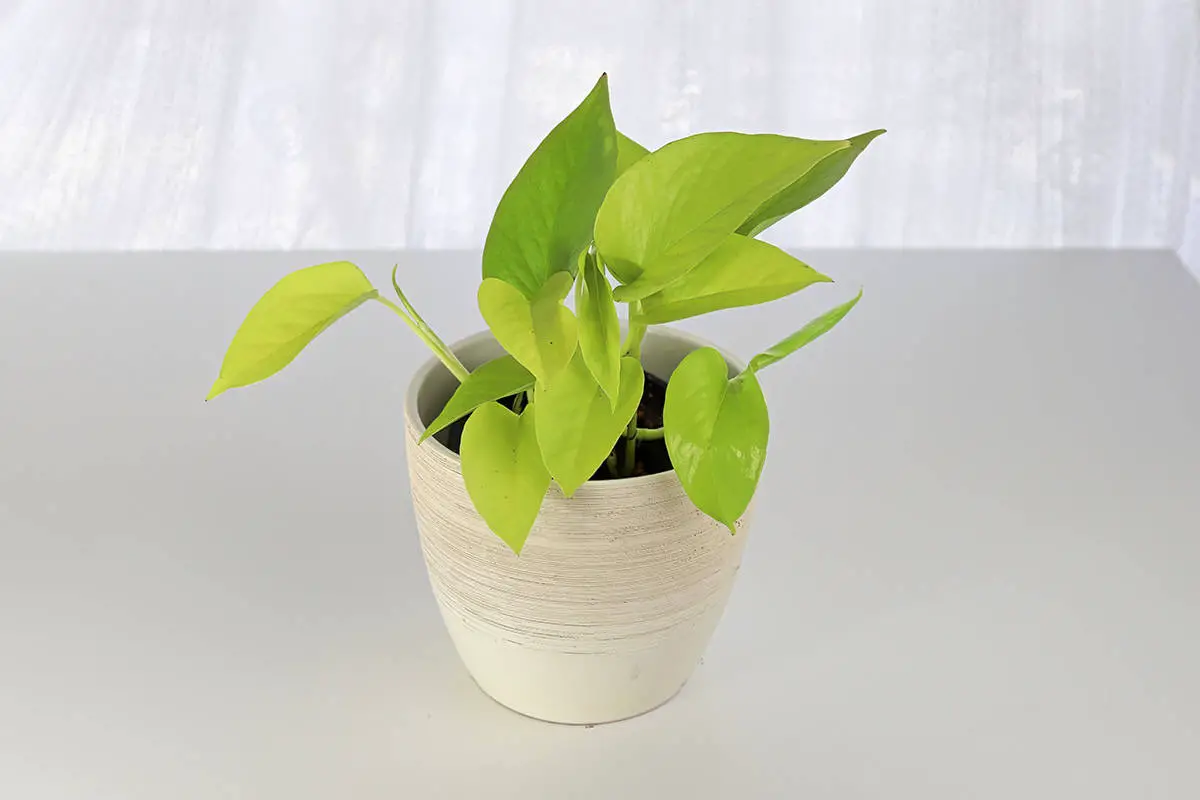
Distinctive for its bright, chartreuse-colored leaves, the Neon Pothos brings a vibrant pop to your space. It thrives in bright, indirect light to keep its color vivid.
Jade Pothos
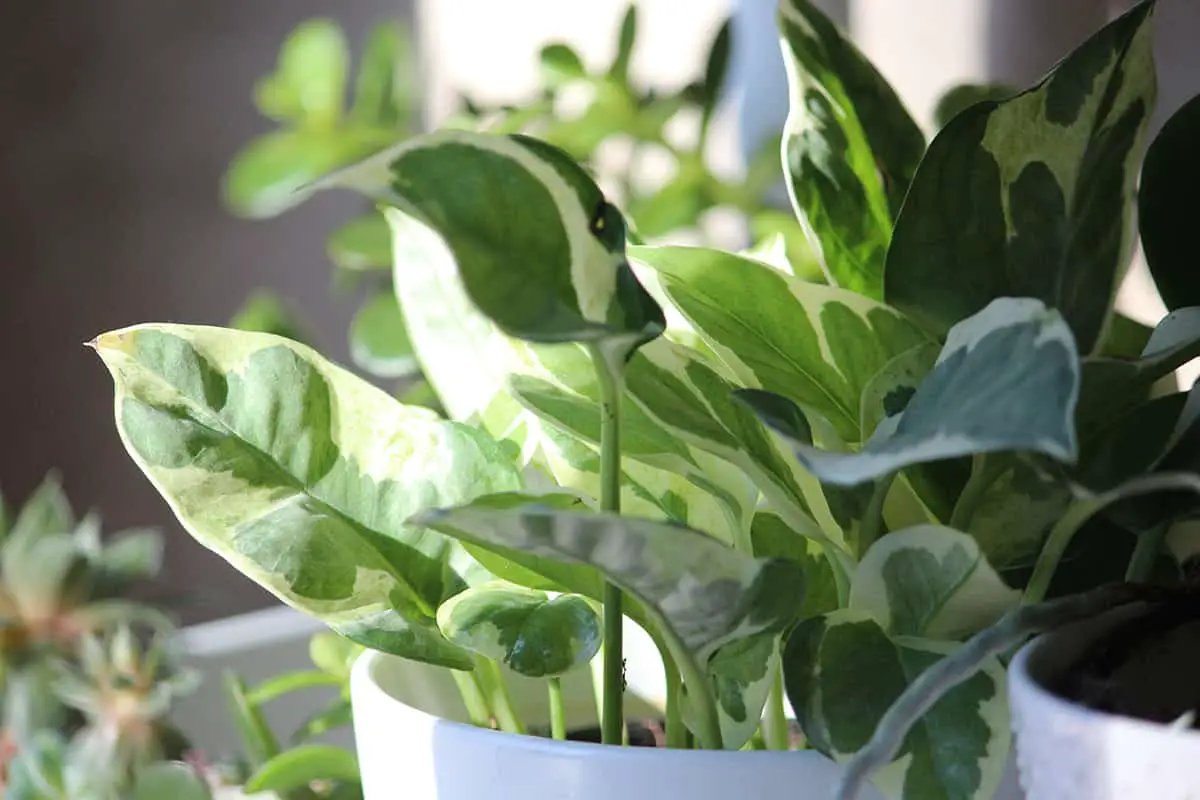
Jade Pothos stands out with its solid green, smooth leaves. It’s an elegant and understated choice, tolerant of lower light conditions than other Pothos.
Silver Pothos

Also known as Scindapsus pictus, Silver Pothos showcases dark green leaves flecked with silver patches. The unique markings mimic a silver sheen, adding a touch of sparkle.
Satin Pothos
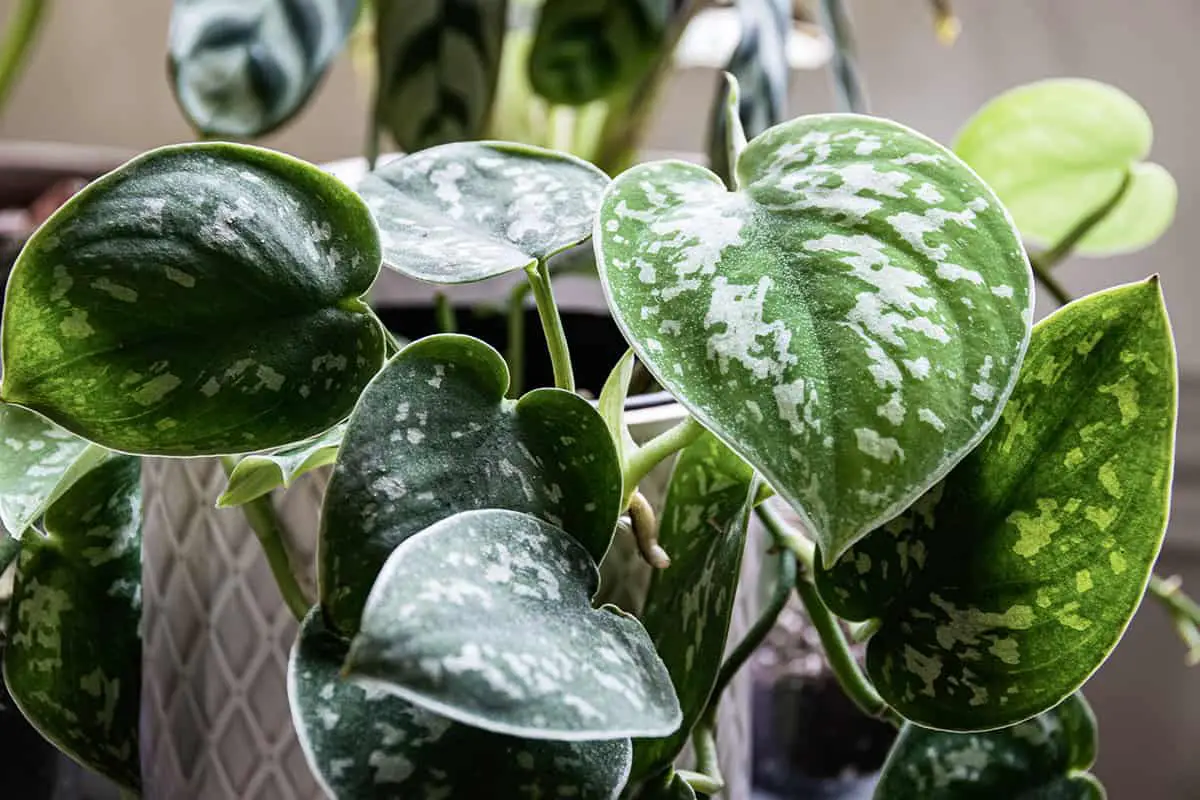
The Satin Pothos is similar to the Silver Pothos but has a softer, satin-like texture on its leaves. Its variegation is more pronounced and creamier in color.
